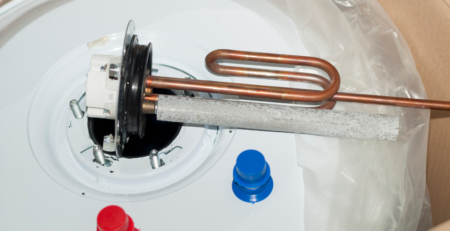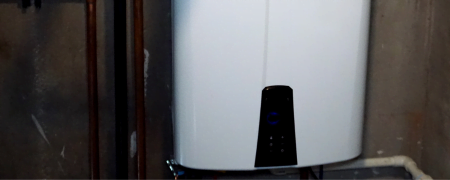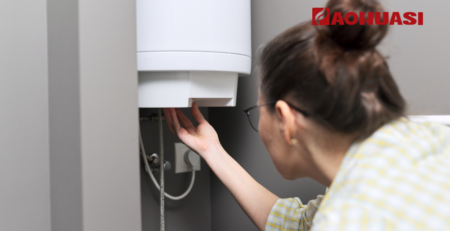Tech Talk: Understanding the Science Behind Electric Home Water Heaters
Understanding the Science Behind Electric Home Water Heaters Electric home water heaters may seem like straightforward appliances, but their functionality involves a blend of technology and science. In this tech talk, we delve into the intricacies of electric water heaters, unraveling the science behind their design and operation. Understanding these principles sheds light on how these appliances efficiently provide the comfort of hot water in our homes.
**1. Basic Operating Principle
At its core, the operation of an electric water heater revolves around the conversion of electrical energy into heat. A heating element, typically made of durable materials like nickel-chromium alloy, is immersed in the water. When electricity flows through the heating element, it encounters resistance, generating heat in the process. This heat transfers to the surrounding water, raising its temperature.
2. Thermostatic Control for Precision
Electric water heaters incorporate thermostats to maintain precise control over water temperature. A thermostat constantly monitors the water temperature and signals the heating element to activate or deactivate accordingly. This thermostatic control ensures that the water is consistently heated to the desired temperature, providing comfort while avoiding overheating or unnecessary energy consumption.
3. Tank vs. Tankless: The Storage Dilemma
In traditional tank-based electric water heaters, a storage tank retains and heats a predetermined quantity of water. The heated water is ready for use whenever a tap is turned on. Tankless electric water heaters, on the other hand, heat water on demand, eliminating the need for storage. The science here involves instantaneous heating, providing hot water without the standby heat losses associated with storage tanks.
4. Understanding Energy Factor (EF)
The Energy Factor (EF) is a key metric in electric water heater efficiency. It represents the ratio of useful energy output (in the form of hot water) to the total energy input. The higher the EF, the more efficiently the water heater converts electricity into hot water. EF takes into account factors such as standby losses, cycling losses, and heat recovery, providing consumers with insights into the appliance’s overall efficiency.
5. Heat Pump Technology for Enhanced Efficiency
Some electric water heaters leverage heat pump technology for increased efficiency. Instead of generating heat directly, these systems extract heat from the surrounding air and transfer it to the water. This process is akin to an air conditioner operating in reverse. By tapping into ambient heat, heat pump water heaters can achieve higher EF values, making them a more energy-efficient option.
6. Sacrificial Anodes for Corrosion Protection
Corrosion is a common challenge in water heaters, especially in areas with hard water. To combat this, electric water heaters often include sacrificial anodes made of materials like aluminum or magnesium. These anodes attract corrosive elements in the water, sacrificing themselves to protect the tank and heating elements. Regular inspection and replacement of sacrificial anodes contribute to the longevity of the water heater.
7. Exploring Dual-Element Design
Some electric water heaters feature a dual-element design, typically found in larger tank models. This design involves two heating elements—one at the top and one at the bottom of the tank. The lower element does the initial heating, and the upper element provides additional heating if needed. This configuration allows for faster recovery times, especially during periods of high demand.
8. Overcoming Challenges with Scale Buildup
Scale buildup, caused by minerals in hard water, can affect the efficiency of electric water heaters. To address this, some models incorporate features like self-cleaning mechanisms or specialized elements resistant to scaling. Understanding the impact of water hardness and choosing appropriate mitigation strategies is key to maintaining the heater’s performance over time.
9. Safety Measures: Temperature and Pressure Relief Valve
The science of safety is integral to electric water heaters. Temperature and Pressure Relief (TPR) valves are crucial components designed to release excess pressure or temperature in the tank. If either exceeds safe levels, the TPR valve opens, allowing water to escape and preventing catastrophic failures. Regular testing and maintenance of TPR valves are essential for the continued safety of the water heater.
10. Smart Technologies for Efficiency and Convenience
Modern electric water heaters are embracing smart technologies to enhance efficiency and user convenience. Smart controls, Wi-Fi connectivity, and integration with home automation systems enable users to monitor and adjust water heater settings remotely. These technologies contribute to energy savings by allowing users to optimize usage patterns and ensure the water heater operates efficiently.
Conclusion
The science behind electric home water heaters combines electrical engineering, thermodynamics, and material science to create appliances that efficiently deliver hot water to our taps. From the basic heating principles to advanced technologies like heat pumps and smart controls, understanding the science behind these appliances empowers consumers to make informed choices and maximize the benefits of modern water heating solutions.
Get Access Now
Ready to explore the science and technology behind electric home water heaters? Visit for insights, comparisons, and expert recommendations on water heaters that seamlessly blend science with comfort. Discover the advancements that make electric water heaters efficient, reliable, and a vital part of modern homes.




Leave a Reply